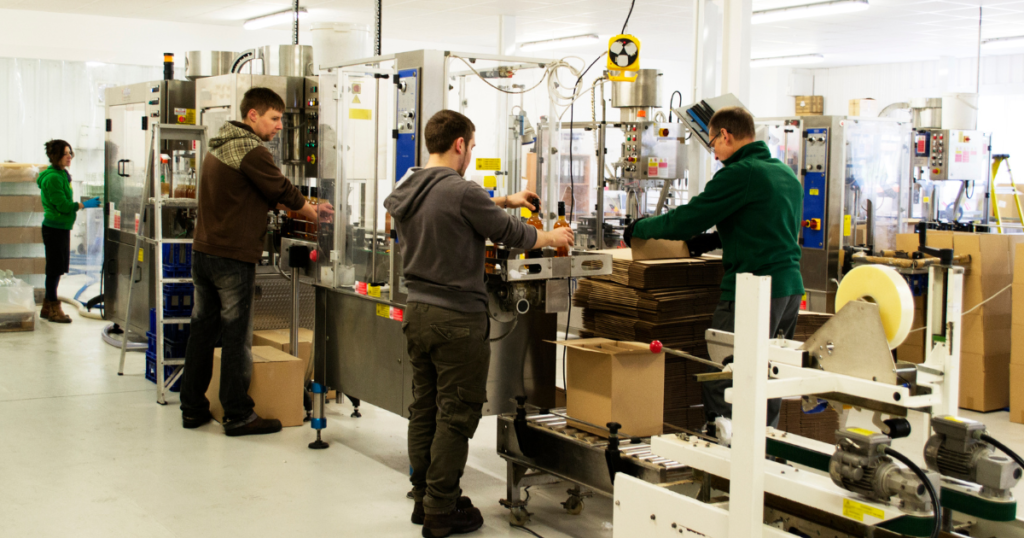If you’re a small business owner in the manufacturing industry, you know that there are many challenges facing small Manufacturing businesses that come with running your company. In order to be successful, it’s important to find ways to conquer these challenges and grow your business. In this blog post, we will discuss three of the biggest challenges facing small manufacturers and offer tips on how to overcome them.

The Current State of Small Manufacturing
The manufacturing industry is a key part of the American economy, and it plays a vital role in the country’s ability to compete in the global marketplace. However, in recent years, the US manufacturing sector has been in decline. Despite being a leading driver of employment growth for decades, manufacturing has shed employment over the past 40 years as the U.S. economy has shifted to service-providing industries.
There are so many challenges facing small Manufacturing businesses, but one of the main reasons for this decline is the rise of automation and robotics. As machines become more sophisticated and efficient, they are increasingly replacing human workers in factories. Another reason for the decline is the high cost of doing business in the US. Taxes and regulations are among the highest in the world, and this can be challenging for small businesses.
Despite these challenges, there is still hope for small manufacturers in the US. There are many ways to scale a small manufacturing business, and there are plenty of resources available to help you overcome the obstacles that you face. In this blog post, we will discuss three of the biggest challenges facing small manufacturers and offer tips on how to overcome them.

Problem 1: Sourcing Insightful Ideas
In order to grow your business, you need to find ways to innovate and solve problems. One challenge facing small Manufacturing businesses is finding new ideas and solutions, as they often don’t have the processes or resources to get feedback and ideas generated.
Source ideas from your team
One way to find new ideas is to brainstorm with your team. Get together and come up with as many ideas as possible, no matter how crazy they may seem. Then, narrow down the list and focus on the ones that are most feasible and have the biggest impact.
Hire a Solution Based Team Member
Hiring a team member with a background in innovation and problem-solving can help bring new ideas to your company. Look for someone who is creative, forward-thinking, and has experience in the industry. They can help generate new ideas and solutions for your business, leading to growth and improvement.
Utilize outside resources
Another way to find new ideas is to look outside of your company. Attend industry events and networking gatherings to meet others in the manufacturing industry and exchange ideas. Join online groups or forums where you can discuss challenges and solutions with other small manufacturers. Utilize resources like market research, customer feedback, and competitive analysis to gain insight into what solutions are needed in the industry.
Bring in a Consultant
One way to overcome the challenge of finding new ideas and solutions is to use a business consultant. A business consultant can help you assess your business and suggest ways to improve efficiency and grow your company. They can also provide you with insights and ideas that you may not have considered before.
There are many different types of consultants available, so it’s important to find one that has experience in the manufacturing industry. You can find consultants through online directories, such as the United States Association of Manufacturing Consultants, or by contacting your local Chamber of Commerce.
Partner with other Businesses
Another way to overcome this challenge is to partner with other businesses or organizations. By collaborating with other companies, you can share ideas and resources, and you can learn from each other’s experiences. This can also lead to new opportunities and expanded markets.

Problem 2: Not Aligning Software with Needed Solutions
You can solve a lot of the challenges facing small Manufacturing businesses with software. We are of course somewhat biased, but hear us out. Any issues with areas like tracking inventory, managing production schedules, and communicating with suppliers and customers can all be solved using software.
Solved: Employee Retention
One of the biggest challenges facing small manufacturers is retaining employees. Factory jobs are often seen as unglamorous and low-paying, so it can be difficult to keep workers on staff for long periods of time.
However, there are ways to solve this issue with software solutions. Here are a few methods that can help:
1.Use Employee Tracking Software
Employee tracking software can help you keep track of who is working and when they are working. This information can be used to create schedules and track hours worked. It can also help you identify patterns in employee absenteeism and tardiness.
This type of software can also help you keep track of employee productivity. You can see which employees are meeting their goals and which ones need more support. This information can be used to provide feedback and training to employees who need it.
2.Use HR Software Solutions
HR software solutions can help you manage employee files, track employee benefits, and monitor performance reviews. This type of software can make it easier to find qualified employees, assess employee performance, and identify issues early on.
By using HR software solutions, you can create a system that is fair and consistent across all employees. This will help keep your workforce happy and motivated, leading to reduced turnover rates.
3.Use Communication Tools
Communication tools, such as messaging apps, can help you communicate with employees more effectively. These tools allow you to send messages quickly and easily, without the need for email or phone calls.
This type of communication is convenient for both employers and employees, as it allows them to stay connected outside of work hours. It also helps employers keep track of employee communications, making sure that everyone is on the same page.
Solved: Component availability issues
One of the biggest challenges facing small manufacturers is securing access to components. This can be due to a variety of reasons, such as supplier shortages or delivery delays.
However, there are ways to overcome this challenge with software solutions like Parts Dashboard. Here are a few methods that can help:
1. Use Inventory Management Software
Inventory management software can help you keep track of your component stock and identify shortages early on. This type of software can also help you plan your production schedules around available components.
2. Use Purchasing Software
Purchasing software can help you streamline your purchasing process and reduce the chances of ordering too many or too few components. This type of software can also help you find new suppliers and negotiate better prices.
3. Use Communication Tools
Communication tools like the ones mentioned for internal use, can also help you communicate with suppliers more effectively. This type of communication allows you to send messages quickly and easily, without the need for email or phone calls.
This type of communication is convenient for both suppliers and manufacturers, as it allows them to stay connected outside of work hours. It also helps manufacturers keep track of supplier communications, making sure that everyone is on the same page.

Solved: Keeping Costs Down
Another of the challenges facing small Manufacturing businesses is keeping costs down. This can be due to a variety of reasons, such as the high cost of raw materials or labor.
However, there are ways to reduce costs with software solutions. Here are a few methods that can help:
1. Use Manufacturing Software
Manufacturing software can help you streamline your production process and reduce the amount of waste produced. For example, if you’ve been thinking about moving beyond spreadsheets, take a look at our guide. This type of software can also help you find new suppliers and negotiate better prices.
2. Use Accounting Software
Accounting software can help you keep track of your expenses and identify areas where you can save money. This type of software can also help you plan your budget more effectively.
3.Use Procurement Software
Another software that can help keep costs down is procurement software. Procurement software helps businesses purchase goods and services from suppliers in an efficient and cost-effective manner. This type of software can help businesses find new suppliers, negotiate better prices, and track spending. As a result, businesses can save money on their overall procurement costs.

Problem 3: Losing Strategic Focus on your Process
The final challenge facing small manufacturers is losing focus on their business from a strategic level. Businesses can lose focus on strategic aspects of their operations for a variety of reasons. But the outcome could include issues with areas like production planning, scheduling, inventory management, and quality control.
If you are struggling with larger strategic areas, seek out a consultant or advisor who can help you improve your manufacturing process. Look for someone who can provide guidance and support.
When it comes to finding an advisor, there are a few things you should keep in mind.
1.Make sure you find someone who has experience in the manufacturing industry. This type of advisor will have a better understanding of the challenges you are facing and the solutions available to you.
2.Make sure you find an advisor who is trustworthy and reliable. If there’s the option to develop a relationship prior to fully engaging them, for example through a complimentary analysis or session, that will help you ascertain their worth.
3.It’s also important to find an advisor who is able to communicate effectively and listen to your needs. Your advisor should work with you, not just for you, in finding solutions for your business.
4.Make sure you find an advisor who is affordable. This individual should be within your budget so that you can get the most value for your money.
Working with an advisor can be an extremely beneficial experience for small manufacturers. By gaining access to knowledge and resources that they would not have otherwise, these businesses can grow and improve their operations.
Small manufacturing businesses face many challenges, but conquering three of the biggest can help them succeed. By sourcing insightful ideas, aligning software with needed solutions, and staying focused on their process, small businesses can improve their chances for success.
We have been lucky enough to help numerous businesses with a combination of strategic advisory solutions and software solutions so they can conquer top challenges facing small Manufacturing businesses. Our CEO, Toby Dallas, has over 20 years of experience in manufacturing, and provides every customer with strategic guidance. That coupled with our software to streamline PLM, Procurement, Inventory Management, Manufacturing Execution System, and Quality Management makes for a dynamic duo.



